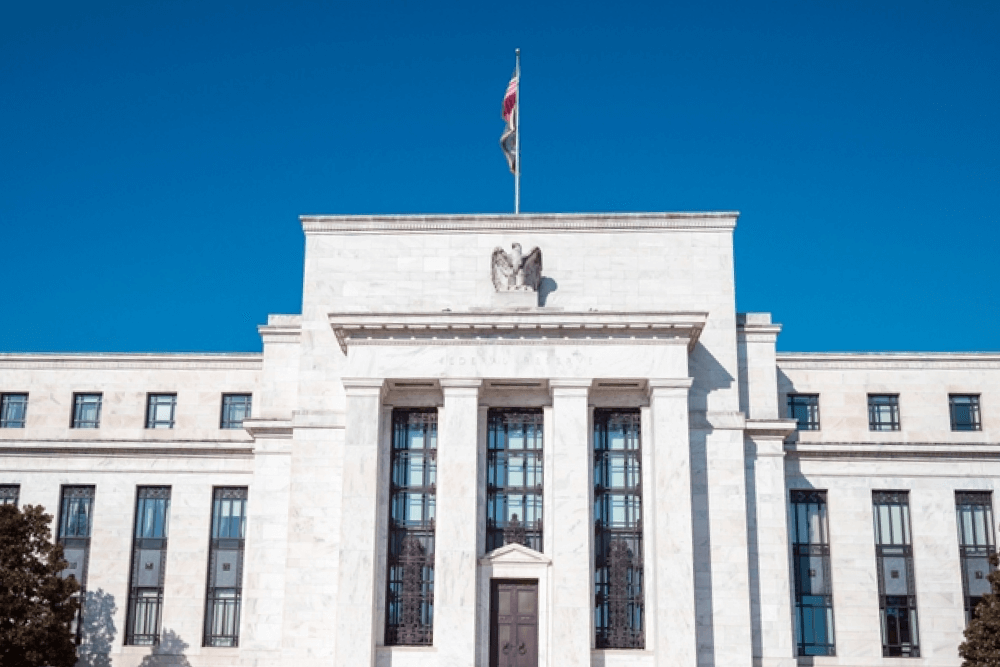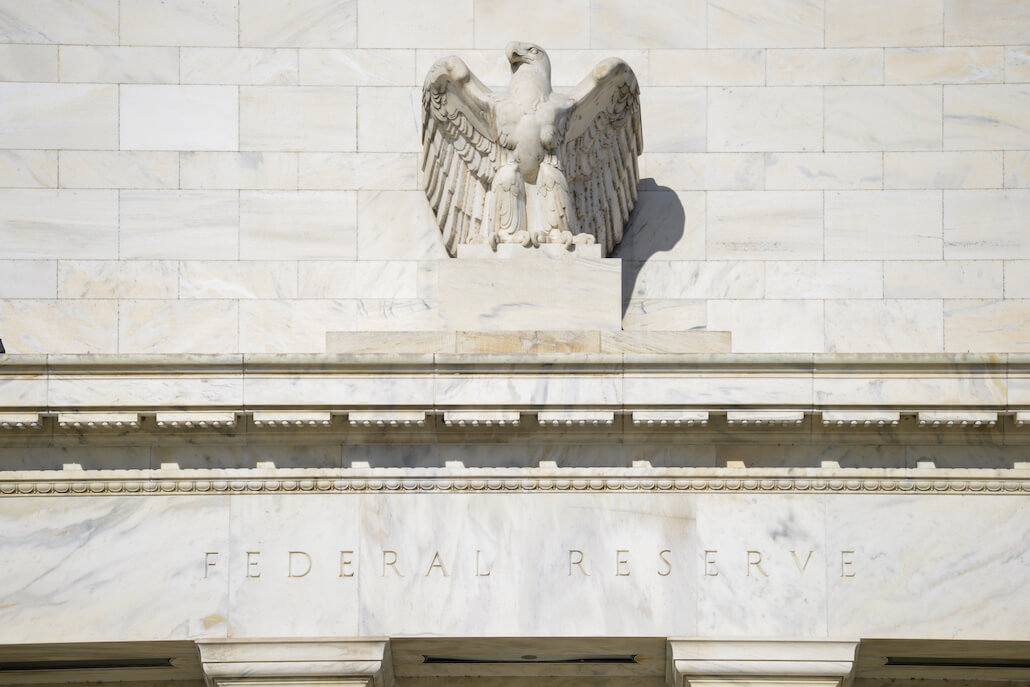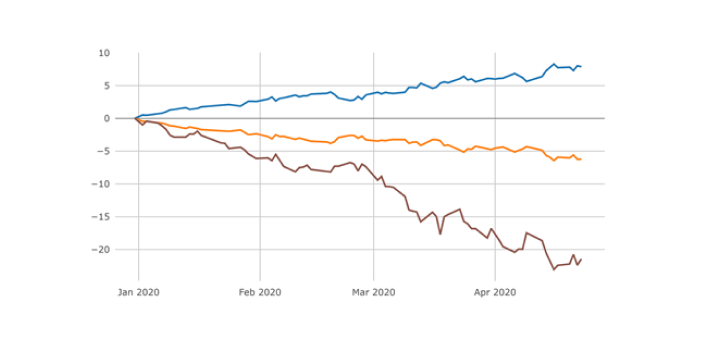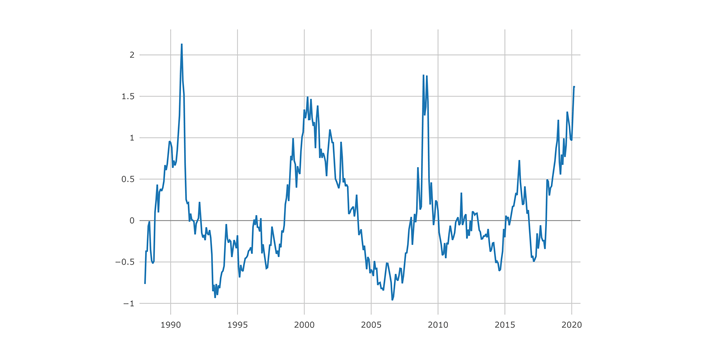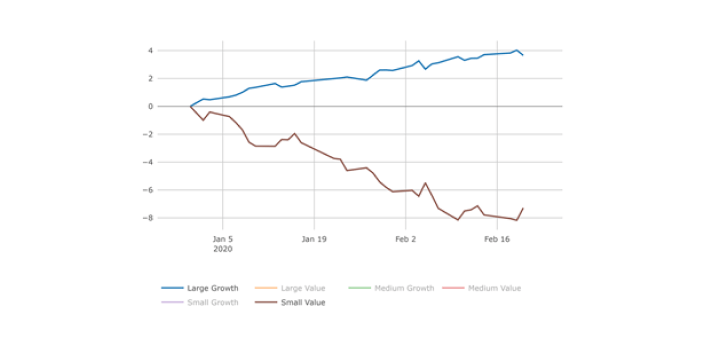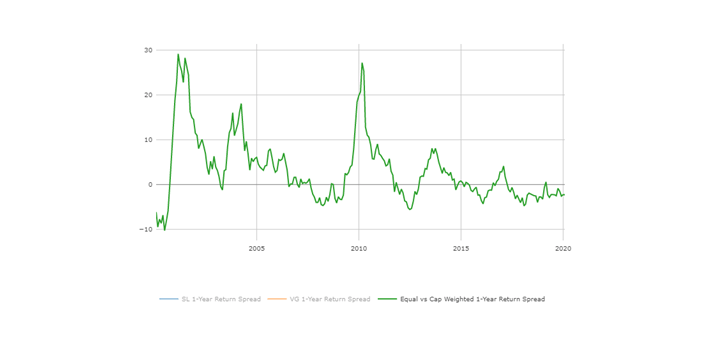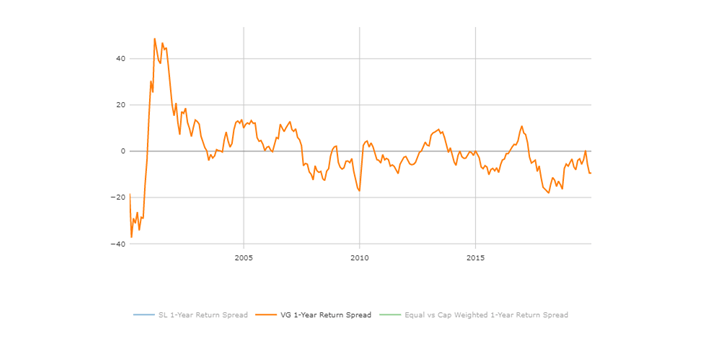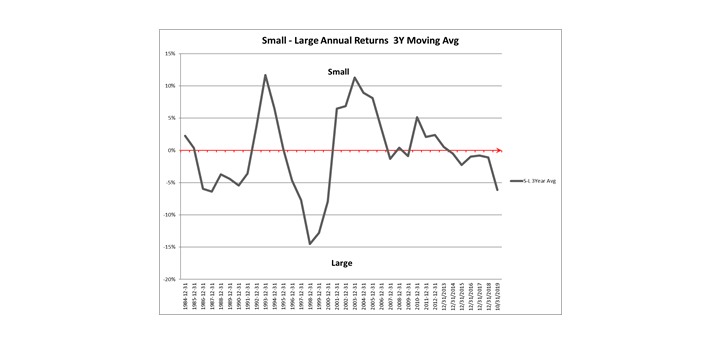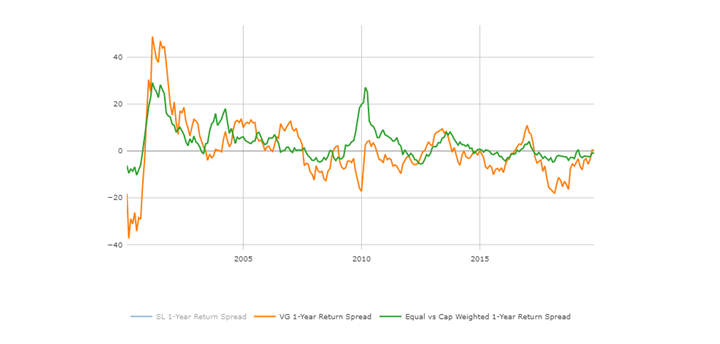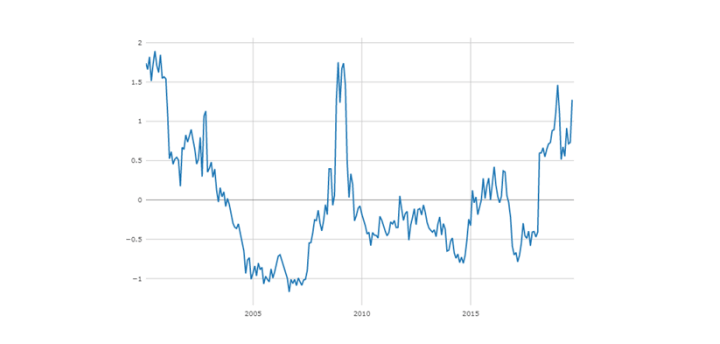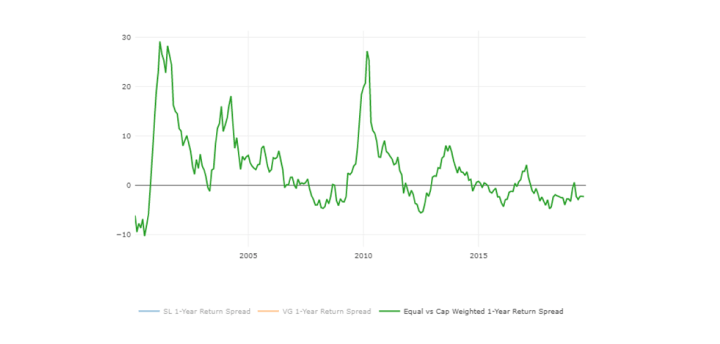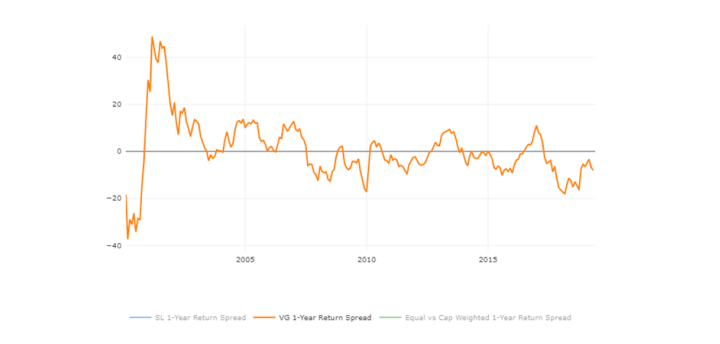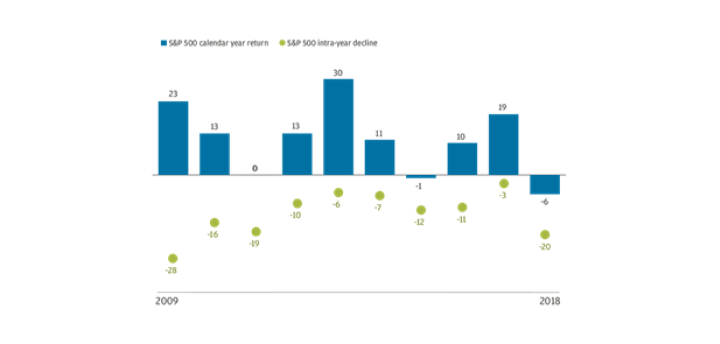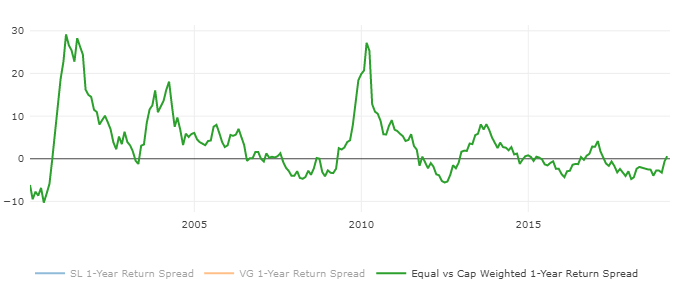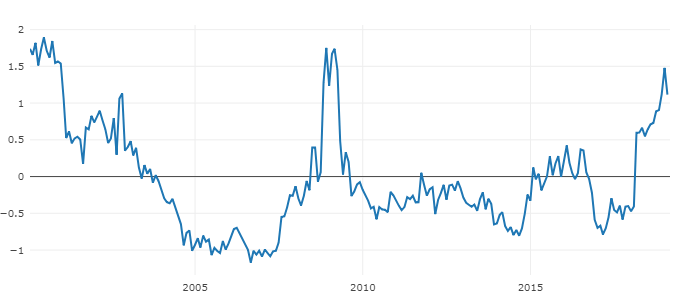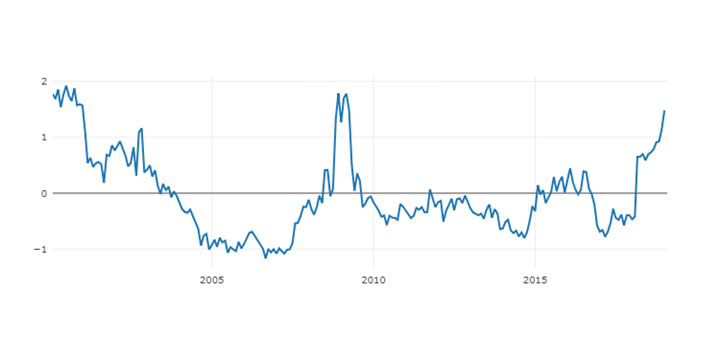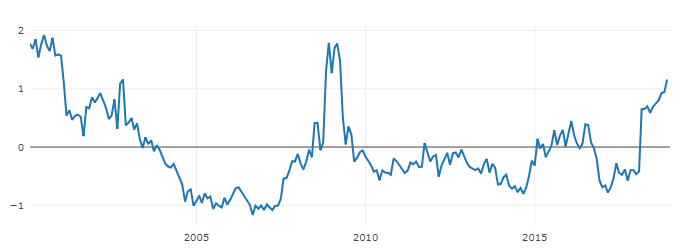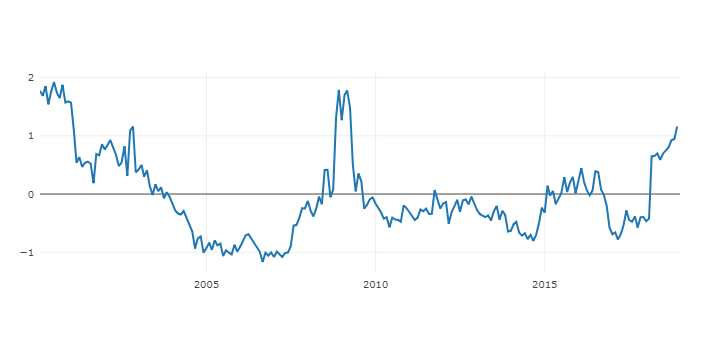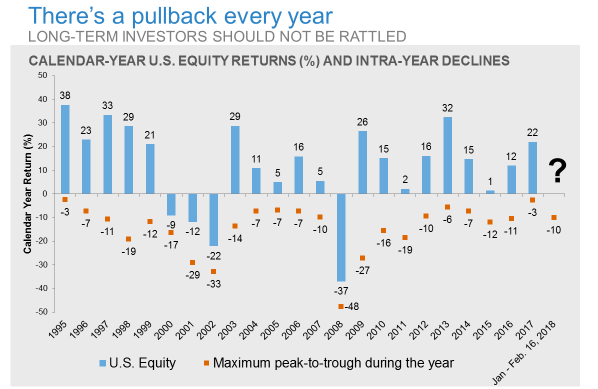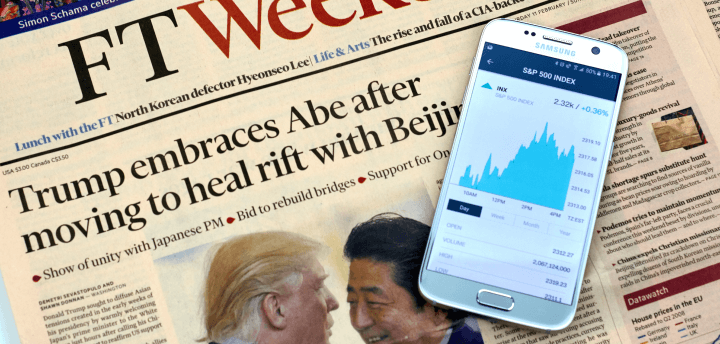
US economics, inflation, and the Fed
The recent economic data has been mixed. On the positive side, there were healthy increases in June’s job creation and retail sales numbers. Conversely, US GDP declined for the second consecutive quarter — which is the classic definition of a recession, however, the National Bureau of Economic Research could still avoid calling these two quarters a recession since there are other criteria (such as a weak labor market) which remain to be seen.
Nevertheless, the housing and homebuilding sectors are showing notable signs of slowing. The National Association of Home Builders/Wells Fargo Housing Market Index tumbled in July, marking the largest single-month drop in builder sentiment in the survey’s 37-year history (excluding April 2020 which was a result of the beginning of the pandemic).
The June inflation figures were remarkably “hot.” The Producer Price Index (PPI) report echoed its companion Consumer Price Index data. Producer prices surged 1.1% and 11.3% on a month-to-month and year-over-year basis, respectively. The year-over-year reading was the largest increase since the record 11.6% advance in March of this year. One silver lining to the inflation reports was a smaller-than-expected increase in the “Core PPI,” which excludes food and energy components; it showed a moderate month-to-month rise of 0.4%.
Taking that all into account, this may be a sign that the Federal Reserve’s attempt to slow demand is starting to influence wholesale levels and, in time, may trickle down to the consumer sector leading to a moderation in overall prices.
According to Value Line, Wall Street is not convinced that the more-restrictive central bank will avoid pushing the economy into a recession. The recent inversion of the Treasury yield curve, which occurs when shorter-term Government notes have higher yields than longer-term notes, bears a concern worth watching. Historically, such inversions have been a reliable indicator of a forthcoming recession or at the very least slowing growth.
The stock market took notice of the slowing economy and took off from recent lows. The rebound was prompted by expectations that after several interest rate hikes in 2022, the Fed could start easing again in 2023 to accommodate a soft landing for the economy.
Global economy
J.P. Morgan predicts global GDP to contract over the second quarter of this year as the global economy has reached an important crossroad. As drags from elevated inflation and tightening financial conditions have continued to build, so has the risk of the developed markets sliding into recession in the coming months, despite relief from China’s economy starting to reopen.
Recent months have seen an impressive display of private sector resilience. This is most evident in strong US and Western European job growth through midyear. However, the deceleration in momentum at midyear is troubling, with consumer sentiment diving throughout developed markets. The US is nearing the onset of a recession with a sustained rise in initial jobless claims to 275k.
Against this backdrop, the rapid increase in claims to above 250k is a warning sign. As the US considers these risks, it is important to recognize the very different paths ahead for the US and European inflation this quarter.
In the US, falling gasoline prices point to a significant moderation in headline inflation to below a 3% adjusted rate in the three months through September. In contrast, the recent surge in European natural gas price futures points to Euro area inflation remaining at an elevated 7.5% adjusted rate for the next three months.
Indeed, an examination of US inflation performance over the past 60 years highlights three stylized facts:
1. Recessions are powerful disinflationary agents.
Since 1960, US recessions have consistently delivered a substantial fall in core CPI inflation. With the notable exception of the pandemic downturn, recessions have generated at least a 1.5%-point slide in core inflation from its cyclical peak when looking back at the “Over-Year-Ago figures.”
2. Mid-cycle slowing delivers limited relief.
Non-recessionary episodes in which growth slows and the unemployment rate temporarily ticks higher have not generally delivered significant disinflation. An outlier was the 1.5%-point slide in core inflation from 1984-86, which was supported by a large appreciation in the dollar and a collapse in global crude oil prices.
3. Disinflation is largest following sharp late-cycle inflation surges.
The magnitude of the “disinflationary dividend” from a recession is closely linked to the size of the inflation surge preceding it. During each of the three recessions between 1970 and 1982, US core inflation (Over-Year-Ago figures) surged by 3%-points or more. The subsequent declines were similarly large, with inflation declines ranging from 3.8%-8.5%-points.
The sharp disinflation unleashed by the recessions of the 1970s and early 1980s displayed a far better disinflationary trade-off than the Phillips curve relationships estimated during expansions over the period. Most likely, this reflects the role of shorter-term inflation pressures building late in expansions that could be quickly unwound by weak demand and slack in labor market conditions.
History suggests that a recession that raises unemployment rates materially will likely deliver a similarly large “dividend” now. Whether sluggish growth that stabilizes unemployment rates can generate a large disinflationary impulse is unclear.
Stock market and the earnings season
Lately, the market has become paranoid about the Fed’s hiking of interest rates. The fear is that rate hikes could go too far in the quest to crush inflation and subsequently cause a severe Fed-induced recession.
As seen with the latest weak retail numbers, we are already in two consecutive quarters of mildly declining GDP. As stated earlier, to be called a recession, the National Bureau of Economic Research needs to see multiple factors including a weak job market along with two consecutive negative quarters. The sheer size of personal savings, healthy employment levels, and corporate profits, which, although affected a bit by current higher prices, still look very healthy on a secular basis (supported by the wide introduction of robotics — cheaper than labor, nuclear energy, etc.) all of which allows us to stay in the optimists’ camp.
What is truly important is the very simple formula of economic growth:
growth = productivity × labor.
If the population of this country grows and more technologies (like robotics) get introduced, the nation will continue to become ever more prosperous.
Second-quarter earnings season got off to a lackluster start. The big banks reported disappointing bottom-line results, blaming a drop-in investment banking activity and increased loan loss reserves. Perhaps this suggests business investment and dealmaking are slowing, as corporations weigh recession fears.
One of the major characteristics of this earnings season is the changing reaction to the earnings results. The bearishness on earnings is quite unanimous, which we argue could lead to a phase of weaker earnings being seen as good. Q2 results are coming out softer than typical, but equity markets have been holding up well through these results, nonetheless.
The information and opinions included in this document are for background purposes only, are not intended to be full or complete, and should not be viewed as an indication of future results. The information sources used in this letter are: WSJ.com, Jeremy Siegel, Ph.D. (Jeremysiegel.com), Goldman Sachs, J.P. Morgan, Empirical Research Partners, Value Line, BlackRock, Ned Davis Research, First Trust, Citi research, HSBC, and Nuveen.
IMPORTANT DISCLOSURE
Past performance may not be indicative of future results.
Different types of investments and investment strategies involve varying degrees of risk, and there can be no assurance that their future performance will be profitable, equal to any corresponding indicated historical performance level(s), be suitable for your portfolio or individual situation, or prove successful.
The statements made in this newsletter are, to the best of our ability and knowledge, accurate as of the date they were originally made. But due to various factors, including changing market conditions and/or applicable laws, the content may in the future no longer be reflective of current opinions or positions.
Any forward-looking statements, information, and opinions including descriptions of anticipated market changes and expectations of future activity contained in this newsletter are based upon reasonable estimates and assumptions. However, they are inherently uncertain, and actual events or results may differ materially from those reflected in the newsletter.
Nothing in this newsletter serves as the receipt of, or as a substitute for, personalized investment advice. Please remember to contact Signet Financial Management, LLC, if there are any changes in your personal or financial situation or investment objectives for the purpose of reviewing our previous recommendations and/or services. No portion of the newsletter content should be construed as legal, tax, or accounting advice.
A copy of Signet Financial Management, LLC’s current written disclosure statements discussing our advisory services, fees, investment advisory personnel, and operations are available upon request.














